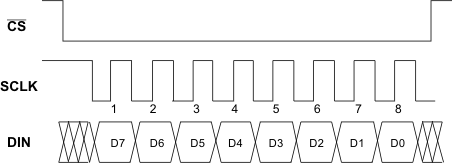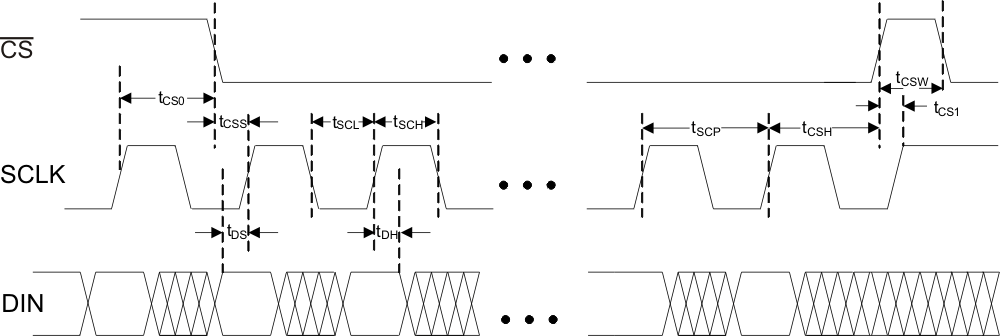SLIS136C September 2011 – September 2019 TPL0501-100
PRODUCTION DATA.
- 1 Features
- 2 Applications
- 3 Description
- 4 Revision History
- 5 Pin Configuration and Functions
- 6 Specifications
- 7 Detailed Description
- 8 Application and Implementation
- 9 Power Supply Recommendations
- 10Layout
- 11Device and Documentation Support
- 12Mechanical, Packaging, and Orderable Information
Package Options
Mechanical Data (Package|Pins)
Thermal pad, mechanical data (Package|Pins)
- DCN|8
Orderable Information
7.5.1 SPI Digital Interface
The TPL0501 uses a 3-wire SPI compatible serial data interface. This write-only interface has three inputs: chip-select (CS), data clock (SCLK), and data input (DIN). Drive CS low to enable the serial interface and clock data synchronously into the shift register on each SCLK rising edge. After loading data into the shift register, drive CS high to latch the data into the appropriate potentiometer control register and disable the serial interface. Keep CS low during the entire serial data stream to avoid corruption of the data.
Table 1. Register Map - Default Value 0x80
| BIT7 | BIT6 | BIT5 | BIT4 | BIT3 | BIT2 | BIT1 | BIT0 |
|---|---|---|---|---|---|---|---|
| MSB | LSB | ||||||
| D7 | D6 | D5 | D4 | D3 | D2 | D1 | D0 |
 Figure 15. SPI Write Sequence
Figure 15. SPI Write Sequence  Figure 16. Digital Interface Timing Diagram
Figure 16. Digital Interface Timing Diagram